-
Title (Dublin Core)
-
Jap air force puts new planes in the air
-
Article Title and/or Image Caption (Dublin Core)
-
Title: Jap air force puts new planes in the air
-
Subtitle: Is the enemy preparing secret weapons for a last battle?
-
extracted text (Extract Text)
-
OUT of three years of air warfare rang-
ing over much of the 63,000,000 square
miles of the Pacific, a new pattern of Japa-
nese defensive tactics is developing. They
bode harder going for the United Nations as
they approach the core of Jap resistance.
For six months after Pearl Harbor, the
Jap airman had things his own way. Then
he began slipping. By mid-1944 his losing
battle on the entire perimeter of his defense
line was assuming the proportions of a
rout. Obviously his air establishment had to
be refurbished if he was to ake a stand.
Today, entering the fourth year of Ameri-
ca's participation in the Asiatic war, we
are encountering bigger, faster, more heavily
armed Japanese aircraft. We are encounter-
ing ingenious devices designed to throw air-
borne broadsides at our heavy bombing
squadrons. Air-to-air bombing, as it is
called, is the newest of the war's anti-
aircraft techniques.
The Jap has only now begun to exhibit the
length and breadth of his resourcefulness as
a last-ditch fighter.
His attempts at air-to-air bombing were
inevitable. His losses in direct fighter as-
saults on our heavily gunned bomber squad-
rons were becoming prohibitive. Interest-
ingly enough, the Japanese atslong last have
begun to conserve their pilot reserve for
the bitter battles to come in China and over
the Japanese homeland.
Unlike the Germans, who experimented
with putting fighter planes in line abreast
and lobbing salvos of rockets at our bomber
formations, the Japs are employing phos-
phorus projectiles in efforts to burn off the
clouds of demolition-laden enemy planes
striking at their industries. These are sup-
plemented with airborne fragmentation
bombs, in clusters, that burst to throw
fragments in all directions at unbelievably
high velocity.
On one mission, a U.S. heavy bombard-
ment group was intercepted by Jap fighters
at about 20,000 feet shortly after the planes
had made their bomb run on the target. A
half dozen passes were made from. nose
and quartering positions. The attacker
came in high, leveled off for his run at 300
feet higher than the bomber, and let go at a
range of 3,300 feet with one or more of ten
66-pound bombs carried under the wing.
The bomb had a three-second time delay.
If the Jap's aim was correct the bomb
detonated at about 800 feet ahead of and
200 feet above his target, since the rate of
closure between bomb and target was 800
feet a second.
The attack was a fair sample of the new
Japanese tactics.
The Japs also are using a new 132-pound
air-to-air bomb and experimenting with
rocket projectiles. Stories are current that
they employ curtains of canisters hung
from wire ribbons attached to parachutes.
The ribbons are of different lengths to
saturate both vertically and horizontally the
portion of the sky that is occupied by an
enemy bomber fleet.
There is little question that the
Japanese are hoarding new types of
extremely fast, heavily armed planes
for the battles to come. Some of
them have been glimpsed briefly on
the outer edge of their air-defense-
in-depth. At least two, perhaps
three, of their fighters are in the
400-mile-an-hour class. For the first
time they have introduced a four-
engine land-based bomber, ostensibly
for assaults on newly won United
Nations bases.
One of their new fighters has an
in-line, liquid-cooled engine, a good
approach to such U. S. types as the
Mustang, the world's fastest. A
long-range Jap reconnaissance plane
has a 2,000-horsepower engine in its
nose. That is only 200 horsepower
less than the highest the United States now uses operationally in a plane.
It is a foregone conclusion that we shall
meet Jap jet-propelled aircraft, inspired by
the German technicians who since Pearl
Harbor have stood behind the Japanese
designer and helped guide his pencil.
Japanese aircraft have gone through a
complete reversal in design trend in the
last few months. In the beginning they
were small, light, lightly armed and with-
out armor plate. They were beautifully
fashioned. They were finished, in fact, much
better than American aircraft. They could
outclimb and outspeed our planes. They
had higher ceilings.
“There T was,” recalled a Wildcat fighter
pilot of the Solomons campaign, “hanging
at 30,000 feet at 90 knots (a bit more than
100 miles an hour) in a ship that was likely
to fall off into a spin at any moment, while
Jap Zeros were doing loops all around me.”
It was simple. The famous Zero, now re-
designed as the Zeke, models 32 and 52,
weighed but 5,500 pounds as against 12,000
10 15,000 for its adversaries. The aluminum-
alloy skin of those early fighters was so
thin that it could be bent between the
fingers.
But Jap design had its weaknesses, and
American fighter pilots took advantage of
them. The moment an American got on a
Jap's tail with a good burst, that thin skin
peeled off like the rind of an orange, or the
fuel tanks, unprotected by self-sealing com-
positions, exploded. Because their planes
were so lightly constructed, most Jap pilots
did not attempt to outdive their foes. They
knew that at high speeds the outsize
ailerons, built into their aircraft to give
high maneuverability, would “freeze
Jap armament was inadequate. Fighter
pilots and the crewmen of bombers were
given the equivalent of our .303 caliber deer
rifle in machine guns, plus 20-millimeter
cannon. Both were of low velocity. Jap
gunners found their targets with .303's
liberally laced with tracers and then opened
up with the cannon.
U.S. planes had nothing less than .50
calibers. One of our fighters mounted a
37-mm. cannon and the rifles on our medium
bombers ran up to 75 mm.
Most of those early Jap planes have dis-
appeared. Here is a gallery of new Jap air
developments:
The army fighter Tojo, like all the other
late-day Jap fighters, is
armed with four guns of a
caliber approximating our
.50’s. It carries armor plate
to protect its pilot. It is
less maneuverable, but a
good deal sturdier, than its
forebears. Resembling our
P-47 Republic Thunderbolt,
it has a top speed of 380
miles an hour.
Judy, replacement for the
aging dive bomber Val that
wrought part of the destruc-
tion at Pearl Harbor, has a
top speed well in excess of
that of our standard Navy
dive bomber.
The Dinah Mark II, twin-
engine fighter, performs
spectacularly. It can carry
its crew of two to 10,000
feet in a fraction more thaw
three minutes.
Betty, navy twin-engine
bomber workhorse, incor-
porates a new power-op-
erated gun turret. For |
months, by the way, the
Japs were ahead of us with
bomber nose and tail tur-
rets that could be rotated
360 degrees to permit gun-
ners to cover any angle of
attack, front or rear. |
© The Jap Mitsubishi Kin-
sel radial aircraft engine
has been boosted in horse-
power from a meager 900
to 2,000. As beautifully ma-
chined as anything turned
out in the United States, it
has machine-cut cooling
fins on its cylinder barrels,
a process that succeeded
sand-casting only a short
time ago in this country. |
In engines we have an edge on the Japs.
They are able to draw only a half horse-
power out of each cubic inch of cylinder as
against three quarters of a horsepower ob-
tained by American manufacturers.
Jap adaptations of foreign equipment are.
endless. The U.S.-manufactured Fairchild
aerial camera has been copied, even to the.
model number and the U. S. Navy's inspec-
tion insignia. But in fitting it to their own
uses the Japs improved it by borrowing
a multislot focal-plane shutter curtain |
from the French Gaumont camera, giving
it a wider speed range. They installed a
German cut-film magazine, superior to
American magazines.
The Japs have new radio detection de-
vices, something compare
able to our radar.
Jap tricks, Jap deceits,
are almost innumerable.
, Lately, when a Japanese
reconnaissance plane is at-
tacked and the pilot has to
bail out, he will toss over-
board a parachute-borne
automatic radio sending set
to give his home base a
“fix” on the location of the
attack. :
Japs use U. S. Army Air
“Forces signals and tactics
to confuse their adversaries.
In night assaults they will
switch their lights on and
off in one quarter to dis-
tract attention from a foray
from another quarter. They
use air decoys. On the
ground their camouflage is
nearly perfect. They dis-
pense with tracers in their
antiaircraft fire to hide
their gun positions. They
set traps, such as oil drums
left in the open to invite
strafing.
Up against major-league
opposition for the first time
in his modern military his-
tory, the Jap has learned
quickly. He copied the U.S.
Navy “Thach weave,” a to-
and-fro flying maneuver by
two-plane elements that
protects each pilot from a
surprise attack.
But the Jap is notorious
for mediocrity in pilot ma-
terial and in tactics, and
on those shortcomings we
are capitalizing. The Jap
cannot think when he gets
in a tight situation, for all
his undeniable skill as a pilot.
“I got boxed by a brace of floatplanes,”
related the pilot of an Avenger torpedo
bomber, “but I made a cloud. I stooged
around for a while, and when I came out
the Japs were gone. U. S. Navy pilots
wouldn't do that. They would have hung
around that cloud the rest of the day.”
The Jap's evasive action consists of fitful
turns or diving. The one makes him lose
air speed and frames him for a perfect
target. The other renders him a sitting
duck for the one-two attacks by teams of
American airmen who have learned that
collaboration enables them to live to fight
another day.
Jap pilots have a predilection for sense-
less acrobatics. They cannot make a de-
flection shot—one in which they must com-
pensate for the difference in the angular
courses of their own planes and thir tar-
gets, relative speeds, range and the velocity
and trajectory of their bullets. They waste
an appalling amount of steel trying for
high stern runs, and a direct burst, on
enemy planes. Inexplicable things happen.
A Jap fighter will stand off out of range
and empty its guns and then wheel about
and scoot for home. It bewilders the op-
position but it doesn't help win the war
for Hirohito.
Japs live by the samurai code, which does
not allow them to be captured. Only death
is honorable. Some of the results are weird.
One Jap pilot, told that he must never
leave his plane's operations manual off his
person, bailed out with it and courteously
presented it to his captors. Because he
theoretically could not be captured, he
could not be told what to do if he was.
‘There is little question that we have
killed off or captured the best of the Jap
airmen—apart from those assigned to the
defense of China and the homeland. Jap
air squadrons used to contain four enlisted
pilots to one officer. Now the ratio is six
to one. Only the officers are briefed before
a mission. When a majority of the officers
are shot down, the flight begins to disin-
tegrate.
The Jap mind, architect of a quick war
and a hard peace, has begun to exhibit con-
tradictions in impulse and duty. Often the
Jap airman is anxious to save his own
skin. His interpretation of honorable con-
duct is becoming elastic.
But he is being urged at the same time
to make suicide dives into our bomber
formations,
Col. Kingoro Hashimoto, fiery head of the
central headquarters of the Imperial Rule
Assistance Association, the totalitarian
party, outlined the pattern of attack in a
radio address: “By carrying out a suicidal
crash against our objective, shall we not
sink a battleship with a single plane, and ,
shall we not force down a plane carrying
ten men with a single plane?”
Radio Tokyo reports the use by the Jap-
anese air force of a new suicide plane—
“a V-1 with a pilot.” With its weakness for
embroidering, Tokyo said the planes were
in the hands of a “special attack corps,”
composed of youths of 18 to 20 who were
supplied with only enough fuel to reach
their targets.
The Japs aren't whistling in the dark.
They know that they equal us in many re-
spects, and excel us in some.
The Zeke 52 and the U.S. Navy Hellcat
are equal in range—about 1,500 miles—but
the Zeke remains more maneuverable, if less
speedy. Jap medium bombers are not to be
sniffed at. The Betty can fly 3,200 miles
without refueling. Emily, four-engine fly-
ing boat, has a top speed of almost 100
miles greater than our Consolidated Coro-
nado, despite the fact that it weighs more
and has a nine-foot-greater wing span.
The Jill torpedo bomber has a speed of
310 miles an hour, as against our Avengers
250 plus. Frank I, a fighter, can do more
than 400 miles an hour and has a range of
1,700 miles. Jack II, another fighter, is
rated at about 400 m.p.h. and has a range
of about 1,100 miles. Frances, medium
bomber, has a top speed of about 350 miles
an hour and a maximum range of 2,800
miles.
The Dinah II, army reconnaissance and
light bomber manufactured by Mitsubishi,
has a modern two-speed engine supercharg-
er, can fly at a top speed of 360 miles an
hour, and has a range of about 1,700 miles.
The Japs’ flush riveting, designed to
create cleaner wing surfaces, compares
favorably with ours. The skin on the first
Zekes was found to be better than anything
we had produced up to that time. It enabled
the enemy to use lighter supporting struc-
tures in the fuselage and wings.
Japanese aircraft designs are suited to
quantity production. Tail sections are built
in separate plants and joined to the fuselage
at final-assembly stations. The quality of
their aircraft instruments is good. In some,
it is superlative.
While the Japanese copied freely from us
in the development of hydraulically oper-
ated “variable-pitch propellers, they have
supplemented them with electric propellers
borrowed from the French and improved.
Japanese aeronautical research is good.
It probably is a fair statement to say that
it is not as good as ours. Their inability
to produce a good self-sealing fuel tank is
proof of it. They enclose their tanks with
layers of rubber, and in some cases with
layers of kapok, but a solid burst’ will still
make sieves of them.
Jap aircraft manufacture of Jate has
emphasized the production of high-perform-
ance interceptor fighters. The enemy knows
what is coming. The vulnerability of their
cities to incendiaries has been established.
Nagasaki burned quite satisfactorily when
incendiary clusters fell on it from the
capacious bellies of our Superfortresses.
Fires set in Tokyo rage for hours after
the B-20's turn for home. The Jap home-
defense command is moving millions of
residents front 11 big population centers in
anticipation of the expansion of the Ameri-
can air assaults.
On the evening of the day of Pearl Har-
bor, a too-glib American radio commentator
asked: “What are the Japs trying to do,
commit national suicide?"
He was four or five years too early, but
he was right. Barring extraordinary po-
litical developments, Japan will die fighting.
-
Contributor (Dublin Core)
-
B. G. Seielstad (article writer)
-
Language (Dublin Core)
-
eng
-
Date Issued (Dublin Core)
-
1945-01
-
pages (Bibliographic Ontology)
-
67-73,234,238
-
Rights (Dublin Core)
-
Public Domain (Google Digitized)
-
References (Dublin Core)
-
B17
-
Archived by (Dublin Core)
-
Sami Akbiyik
-
Marco Bortolami (editor)
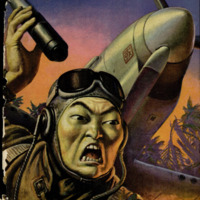 Popular Science Monthly, v. 146, n. 1, 1945
Popular Science Monthly, v. 146, n. 1, 1945
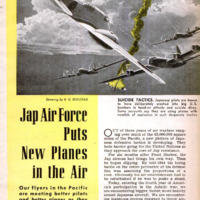 Ekran Resmi 2022-07-19 12.08.35.png
Ekran Resmi 2022-07-19 12.08.35.png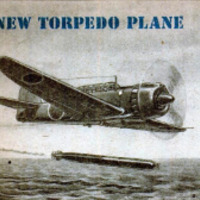 Ekran Resmi 2022-07-19 12.36.38.png
Ekran Resmi 2022-07-19 12.36.38.png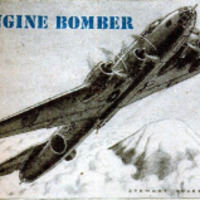 Ekran Resmi 2022-07-19 12.36.46.png
Ekran Resmi 2022-07-19 12.36.46.png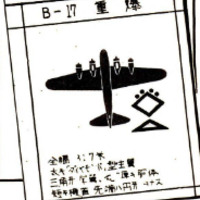 Ekran Resmi 2022-07-19 12.36.55.png
Ekran Resmi 2022-07-19 12.36.55.png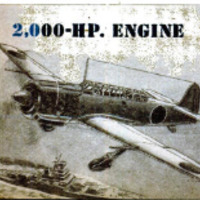 Ekran Resmi 2022-07-19 12.37.03.png
Ekran Resmi 2022-07-19 12.37.03.png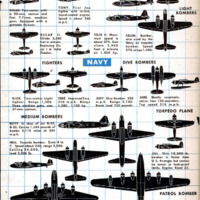 Ekran Resmi 2022-07-19 12.37.12.png
Ekran Resmi 2022-07-19 12.37.12.png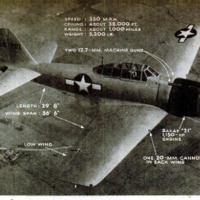 Ekran Resmi 2022-07-19 12.37.20.png
Ekran Resmi 2022-07-19 12.37.20.png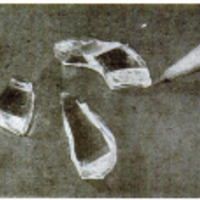 Ekran Resmi 2022-07-19 12.37.28.png
Ekran Resmi 2022-07-19 12.37.28.png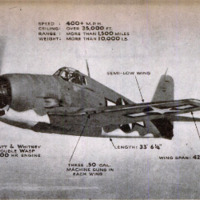 Ekran Resmi 2022-07-19 12.37.34.png
Ekran Resmi 2022-07-19 12.37.34.png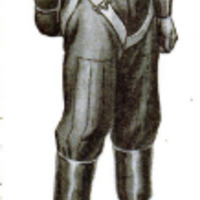 Ekran Resmi 2022-07-19 12.37.41.png
Ekran Resmi 2022-07-19 12.37.41.png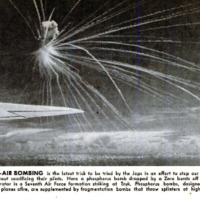 Ekran Resmi 2022-07-19 12.37.50.png
Ekran Resmi 2022-07-19 12.37.50.png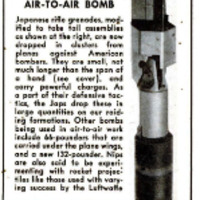 Ekran Resmi 2022-07-19 12.37.59.png
Ekran Resmi 2022-07-19 12.37.59.png











